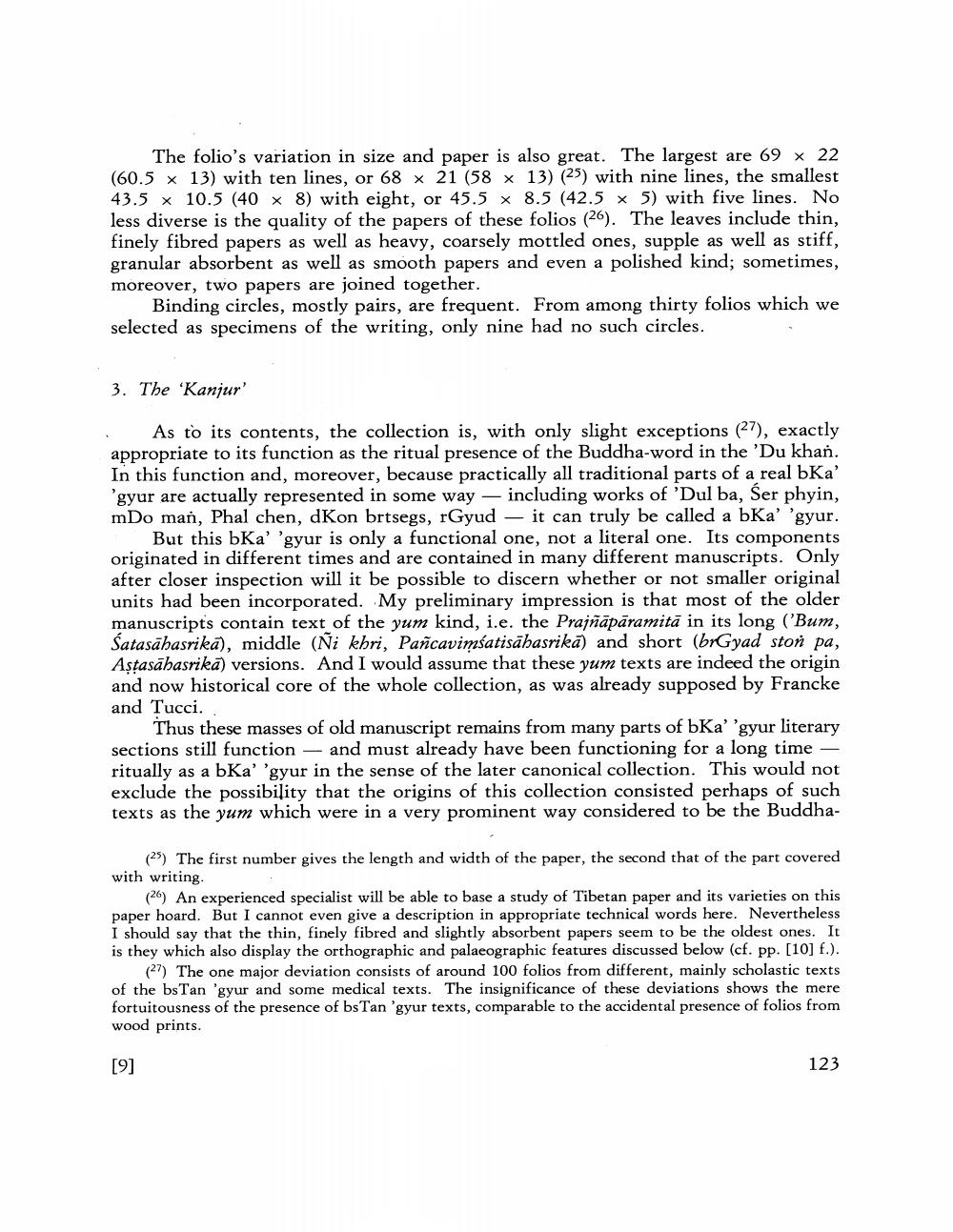Book Title: Report On Kanjur Of Ta Pho Author(s): Ernst Steinkellner Publisher: Ernst Steinkellner View full book textPage 9
________________ The folio's variation in size and paper is also great. The largest are 69 x 22 (60.5 x 13) with ten lines, or 68 x 21 (58 x 13) (25) with nine lines, the smallest 43.5 * 10.5 (40 X 8) with eight, or 45.5 x 8.5 (42.5 * 5) with five lines. No less diverse is the quality of the papers of these folios (26). The leaves include thin, finely fibred papers as well as heavy, coarsely mottled ones, supple as well as stiff, granular absorbent as well as smooth papers and even a polished kind; sometimes, moreover, two papers are joined together. Binding circles, mostly pairs, are frequent. From among thirty folios which we selected as specimens of the writing, only nine had no such circles. 3. The 'Kanjur . As to its contents, the collection is, with only slight exceptions (27), exactly appropriate to its function as the ritual presence of the Buddha-word in the 'Du khan. In this function and, moreover, because practically all traditional parts of a real bka' 'gyur are actually represented in some way — including works of 'Dul ba, Ser phyin, mDo man, Phal chen, dKon brtsegs, rGyud – it can truly be called a bka' 'gyur. But this bKa' 'gyur is only a functional one, not a literal one. Its components originated in different times and are contained in many different manuscripts. Only after closer inspection will it be possible to discern whether or not smaller original units had been incorporated. My preliminary impression is that most of the older manuscripts contain text of the yum kind, i.e. the Prajñāpāramită in its long ('Bum, Satasāhasrikā), middle (Ni khri, Pancavimśatisähasrikā) and short (brGyad ston pa, Astasahasrika) versions. And I would assume that these yum texts are indeed the origin and now historical core of the whole collection, as was already supposed by Francke and Tucci. Thus these masses of old manuscript remains from many parts of Ka''gyur literary sections still function - and must already have been functioning for a long time – ritually as a bka' 'gyur in the sense of the later canonical collection. This would not exclude the possibility that the origins of this collection consisted perhaps of such texts as the yum which were in a very prominent way considered to be the Buddha (25) The first number gives the length and width of the paper, the second that of the part covered with writing. (26) An experienced specialist will be able to base a study of Tibetan paper and its varieties on this paper hoard. But I cannot even give a description in appropriate technical words here. Nevertheless I should say that the thin, finely fibred and slightly absorbent papers seem to be the oldest ones. It is they which also display the orthographic and palaeographic features discussed below (cf. pp. [10] f.). (27) The one major deviation consists of around 100 folios from different, mainly scholastic texts of the bs Tan 'gyur and some medical texts. The insignificance of these deviations shows the mere fortuitousness of the presence of bs Tan 'gyur texts, comparable to the accidental presence of folios from wood prints. [9] 123Page Navigation
1 ... 7 8 9 10 11 12 13 14 15 16 17 18 19 20 21 22
